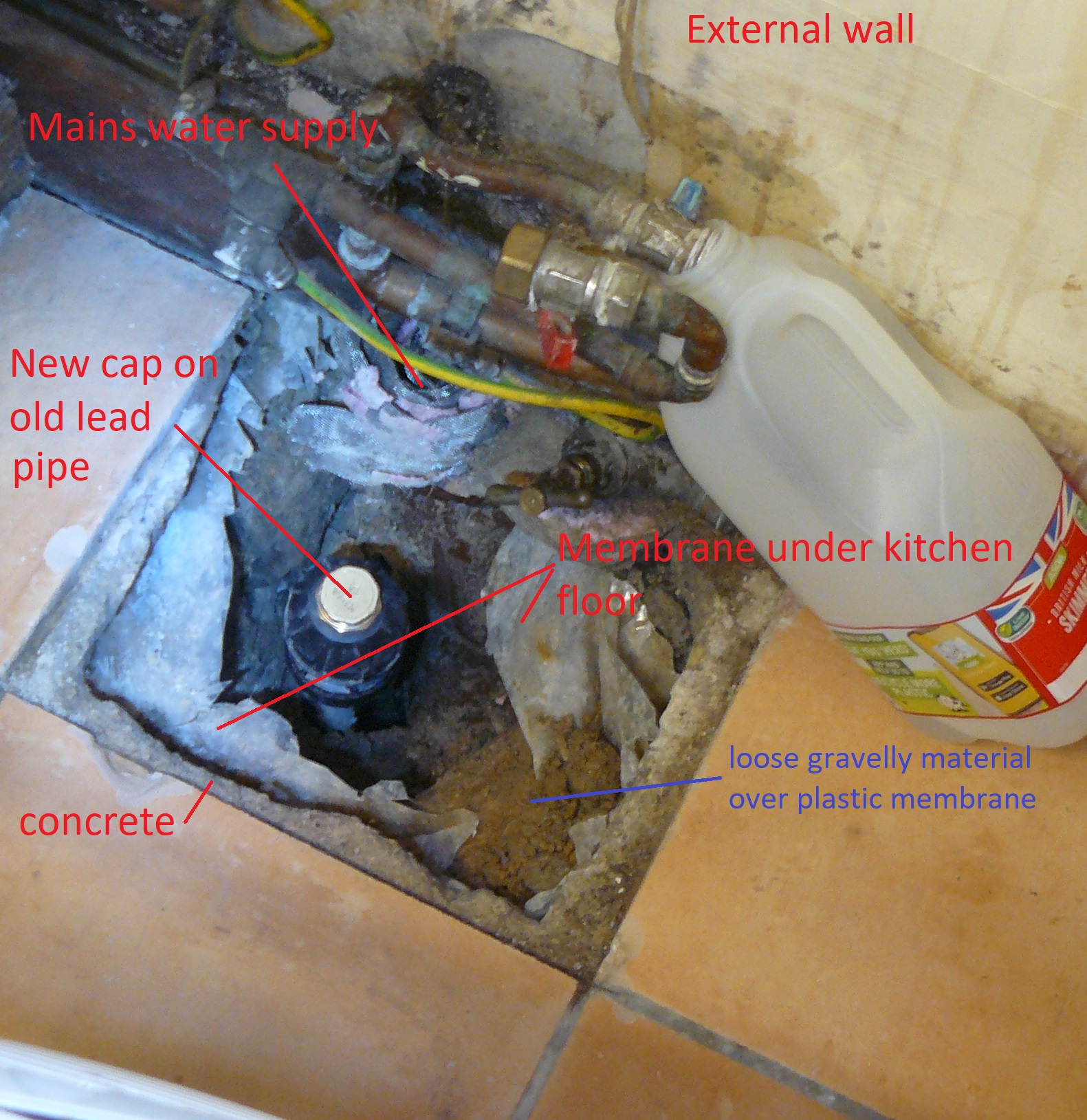- Joined
- 16 May 2021
- Messages
- 8
- Reaction score
- 0
- Country

Hi all, Hope this is the right forum  We've just had a major water leak in the kitchen - an old lead pipe that had been capped started leaking, and must've been running for at least a week before I spotted it (I'd been blaming a small leak on the washing machine door seal). The pipe has now been properly capped, but we're left with a soaking wet floor - it's ceramic tiles laid on top of concrete over a loose scree, over a plastic membrane, from what I can see down the hole.
We've just had a major water leak in the kitchen - an old lead pipe that had been capped started leaking, and must've been running for at least a week before I spotted it (I'd been blaming a small leak on the washing machine door seal). The pipe has now been properly capped, but we're left with a soaking wet floor - it's ceramic tiles laid on top of concrete over a loose scree, over a plastic membrane, from what I can see down the hole.
Things are complicated by it being over the top of a blocked-in cellar - this was done before we bought the house, so over 20 years ago, and we have no idea how it was filled or capped. Up until now, it's not been an issue, but the water from the leaking pipe will have also been running down into this old cellar. The house is over 150 years old, and there's no way into the cellar.
I'm seeing this as two issues: 1) the cellar space, and whether to even try to deal with any water that's in there, and 2)the kitchen floor, and how to dry that out. All I can think to do is to lift some of the tiles and let it dry out, though I have no idea how long that'd take. It's a tiny house, so there's not a lot of floor space anyway, and tiptoeing around a hole in the floor isn't going to be easy! I'm not even sure who I need to speak to about this - it's not exactly a damp-proof issue, as there appears to be a damp proof membrane (plastic) under the floor, and I can't see into the cellar to see how bad things might be in there.
Any thoughts? I'm at something of a loss, and not a little panicky about this!
Things are complicated by it being over the top of a blocked-in cellar - this was done before we bought the house, so over 20 years ago, and we have no idea how it was filled or capped. Up until now, it's not been an issue, but the water from the leaking pipe will have also been running down into this old cellar. The house is over 150 years old, and there's no way into the cellar.
I'm seeing this as two issues: 1) the cellar space, and whether to even try to deal with any water that's in there, and 2)the kitchen floor, and how to dry that out. All I can think to do is to lift some of the tiles and let it dry out, though I have no idea how long that'd take. It's a tiny house, so there's not a lot of floor space anyway, and tiptoeing around a hole in the floor isn't going to be easy! I'm not even sure who I need to speak to about this - it's not exactly a damp-proof issue, as there appears to be a damp proof membrane (plastic) under the floor, and I can't see into the cellar to see how bad things might be in there.
Any thoughts? I'm at something of a loss, and not a little panicky about this!

